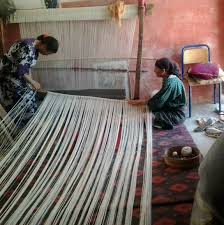The origin of the knotted pile rug

The beginning of carpet weaving remains unknown, as carpets are subject to use, deterioration, and destruction by insects and rodents. There is little archaeological evidence to support any theory about the origin of the pile-woven carpet. The earliest surviving carpet fragments are spread over a wide geographic area, and a long time span. Woven rugs probably developed from earlier floor coverings, made of felt, or a technique known as “extra-weft wrapping”.Flat-woven rugs are made by tightly interweaving the warp and weft strands of the weave to produce a flat surface with no pile. The technique of weaving carpets further developed into a technique known as extra-weft wrapping weaving, a technique which produces soumak, and loop woven textiles. Loop weaving is done by pulling the weft strings over a gauge rod, creating loops of thread facing the weaver. The rod is then either removed, leaving the loops closed, or the loops are cut over the protecting rod, resulting in a rug very similar to a genuine pile rug.Typically, hand-woven pile rugs are produced by knotting strings of thread individually into the warps, cutting the thread after each single knot. The fabric is then further stabilized by weaving (“shooting”) in one or more strings of weft, and compacted by beating with a comb. It seems likely that knotted-pile carpets have been produced by people who were already familiar with extra-weft wrapping techniques


